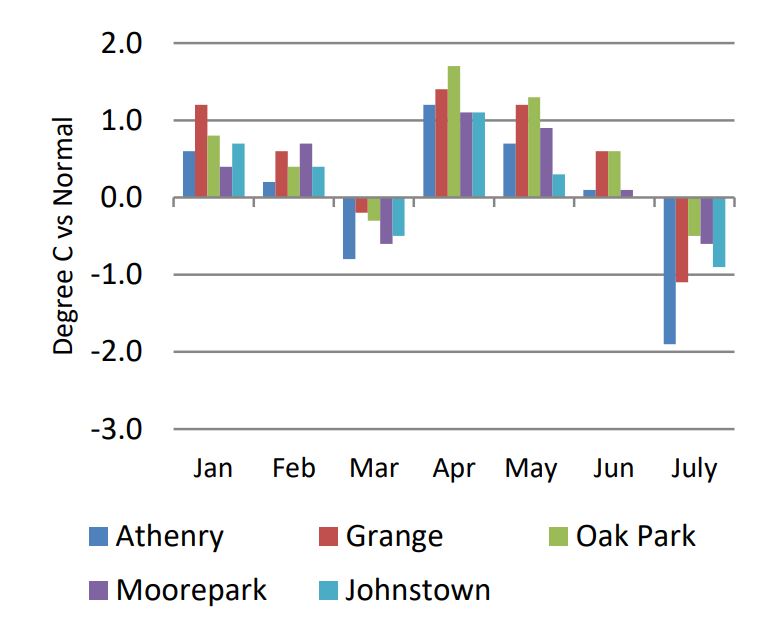Weather conditions in 2020 have shown considerable variation relative to what’s “normal”. That’s according to a new report from Teagasc – namely the ‘Mid-Year Outlook for 2020’.
The report defines “normal weather” as the 30-year average from 1981 to 2010 (inclusive).
This variation has had an impact on both grazing conditions and grass growth at various points during the first half of 2020.
Extremely heavy rainfall in February was followed by below-normal temperatures in March, contributing to a “slow start to the grazing seasons in some areas”.
This was then followed by a period of usually low rainfall levels, which lasted until June – leading to drought conditions in some areas and widespread soil moisture deficits.
This infographic (below) provides a summary of deviations in air temperature to date this year (compared to “normal levels” for a range of Teagasc locations).
Similarly, this further infographic (below) depicts an index of monthly rainfall amounts (relative to “normal levels” across a number of Teagasc locations).
Weather conditions in June were close to normal, but July has seen cooler temperatures, with less sunshine and considerably more rainfall than normal, particularly in Athenry. By contrast, rainfall levels in Moorepark in July were below normal.
The impact of the brief drought conditions is evident in this infographic (below), which shows a clear dip in grass growth in June, as measured by PastureBase Ireland.
However, the period of low rainfall “did not extend long enough to have a serious impact on [grass] production”. With the return to more normal weather in June of 2020, grass growth rates quickly reverted to normal in July.



